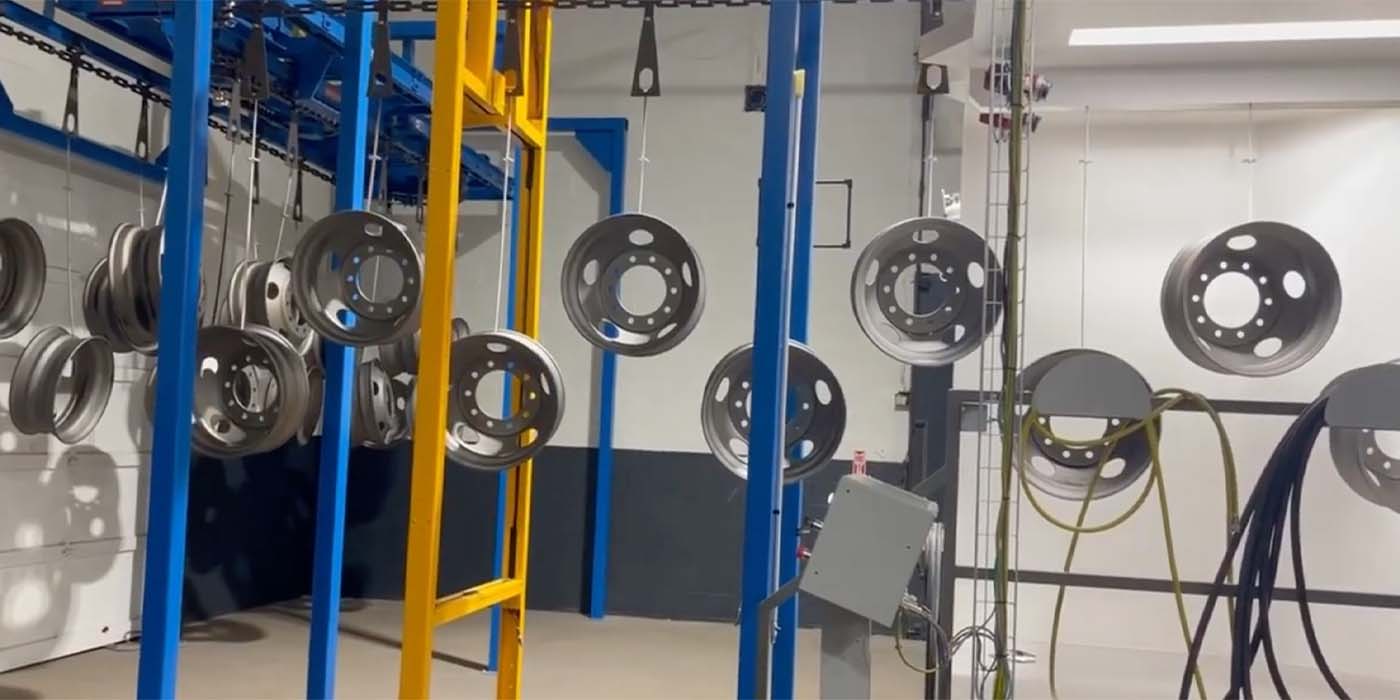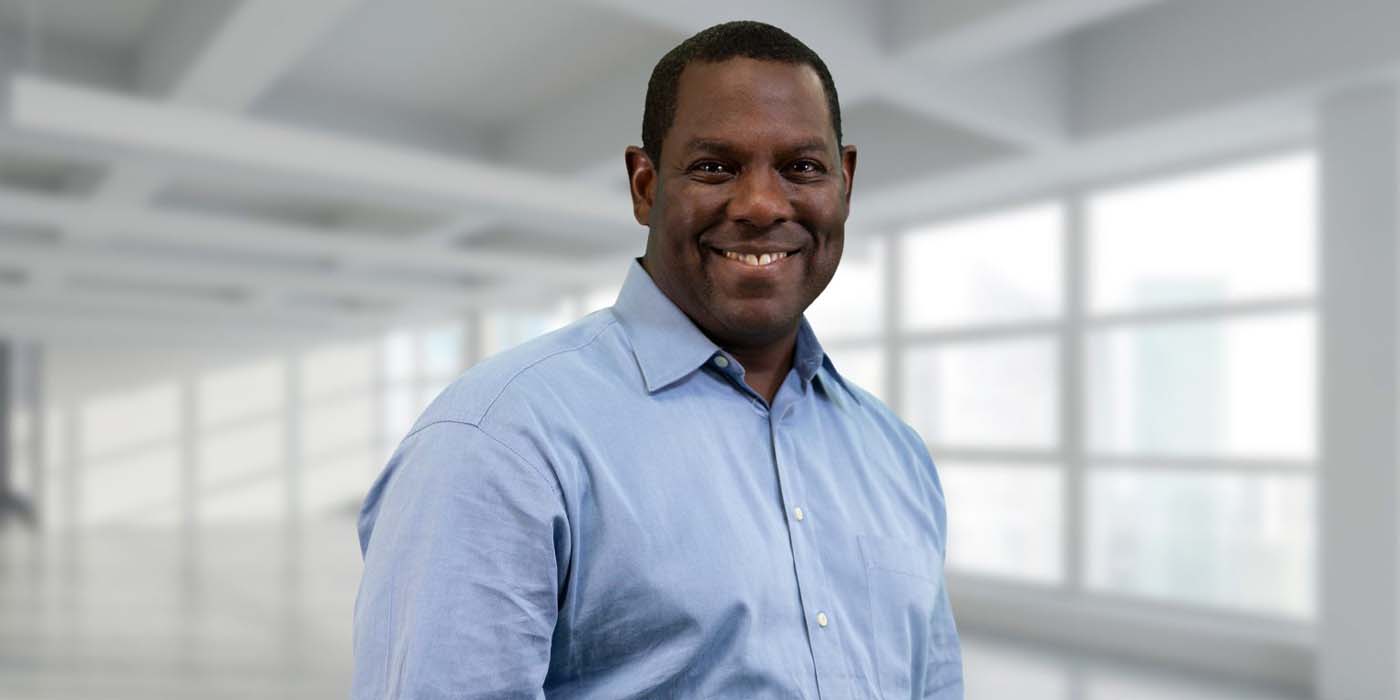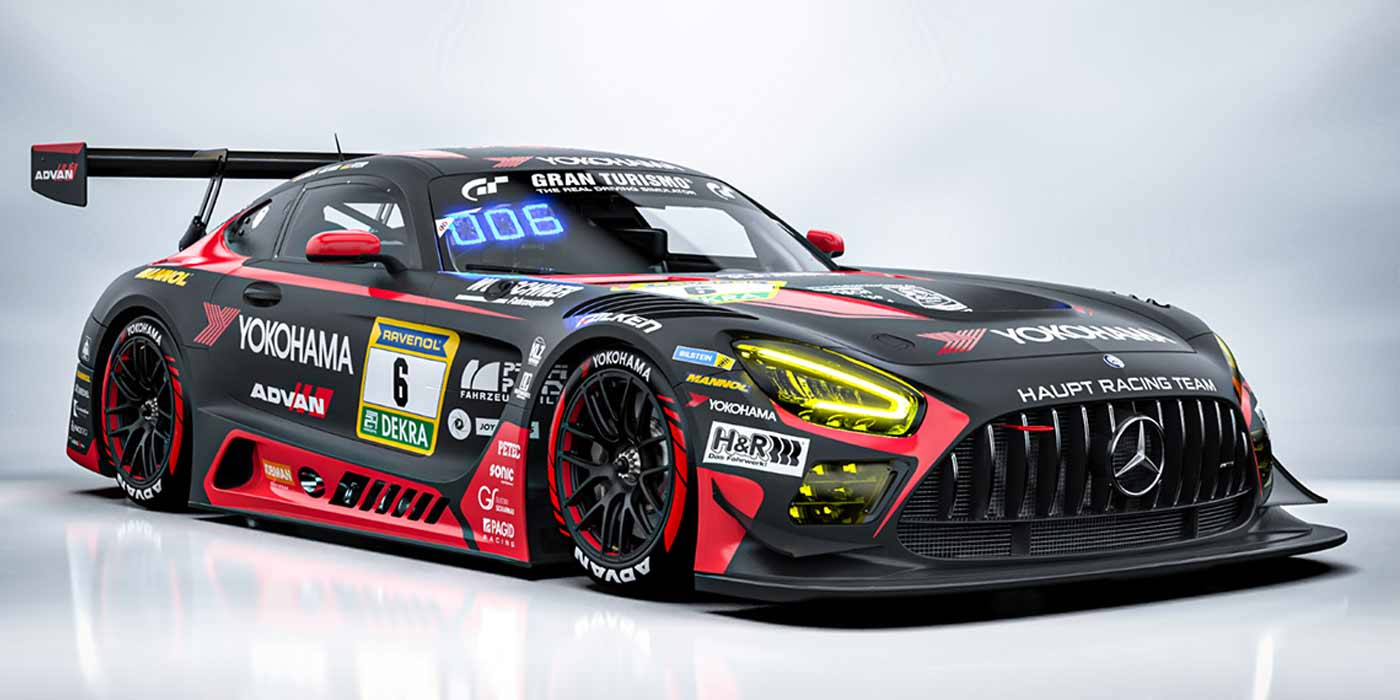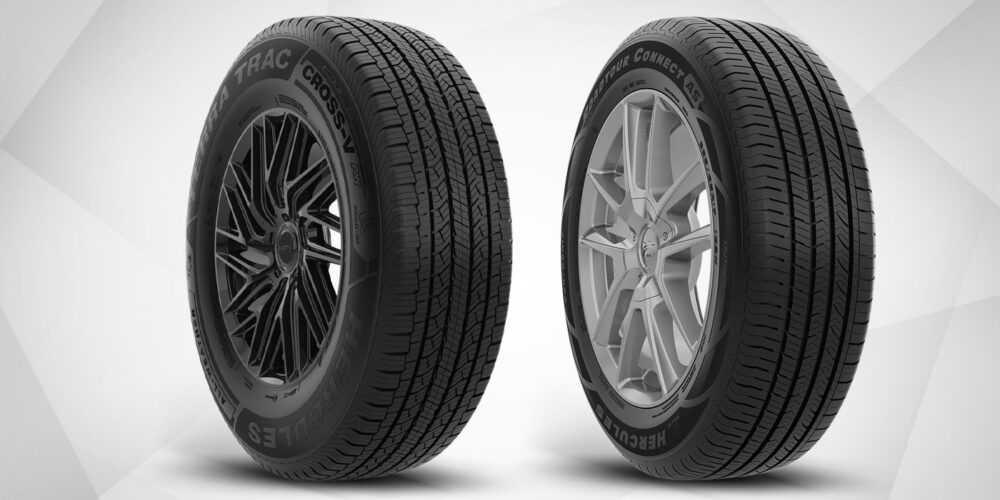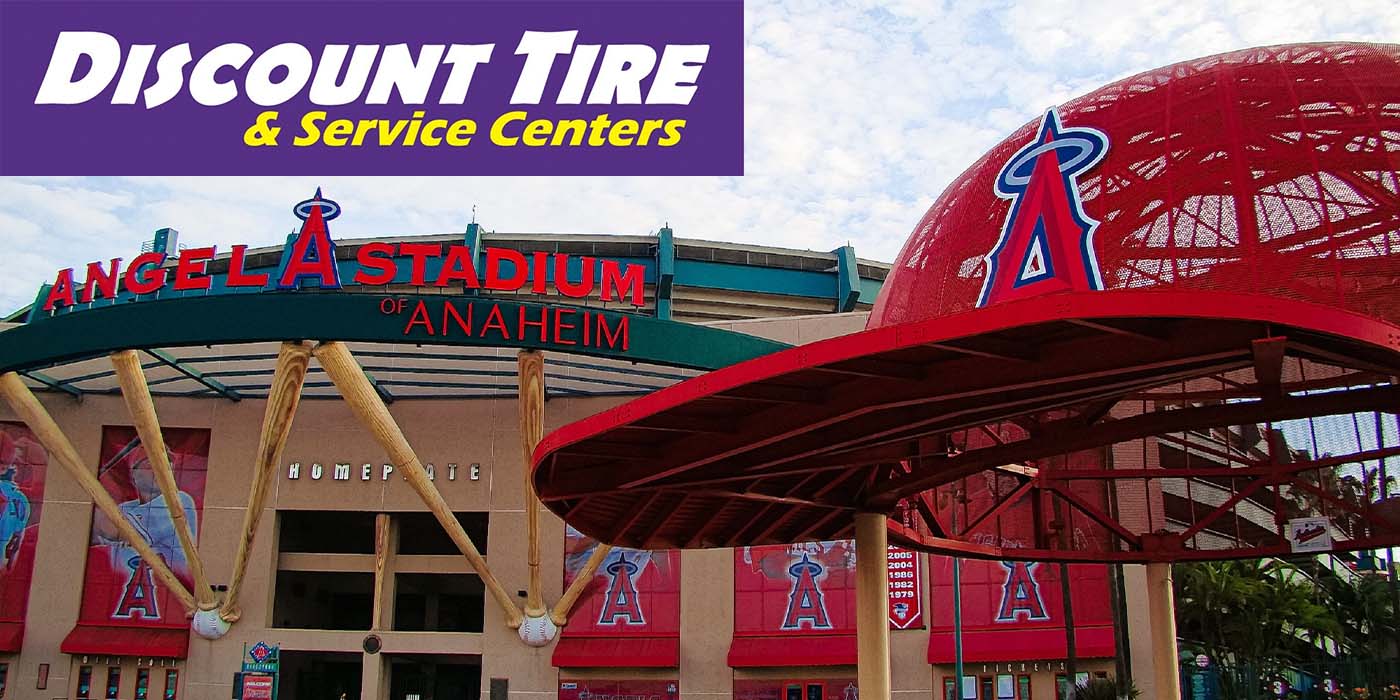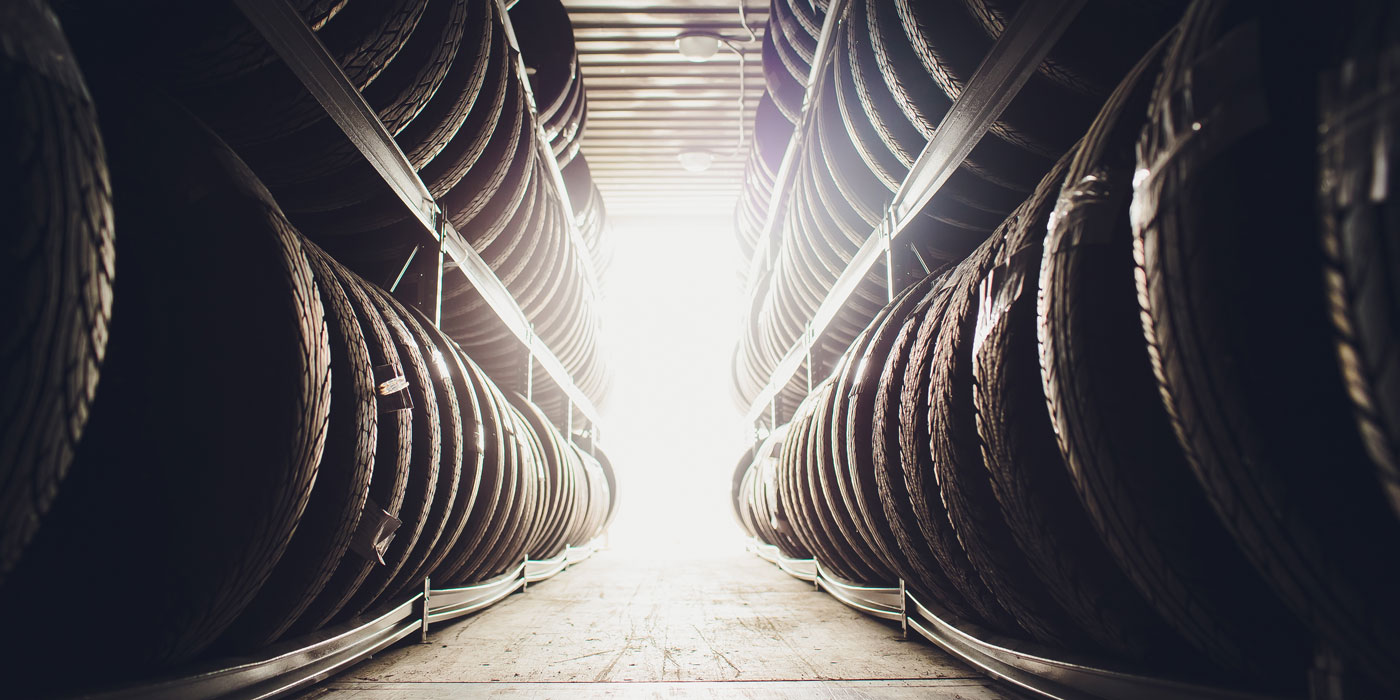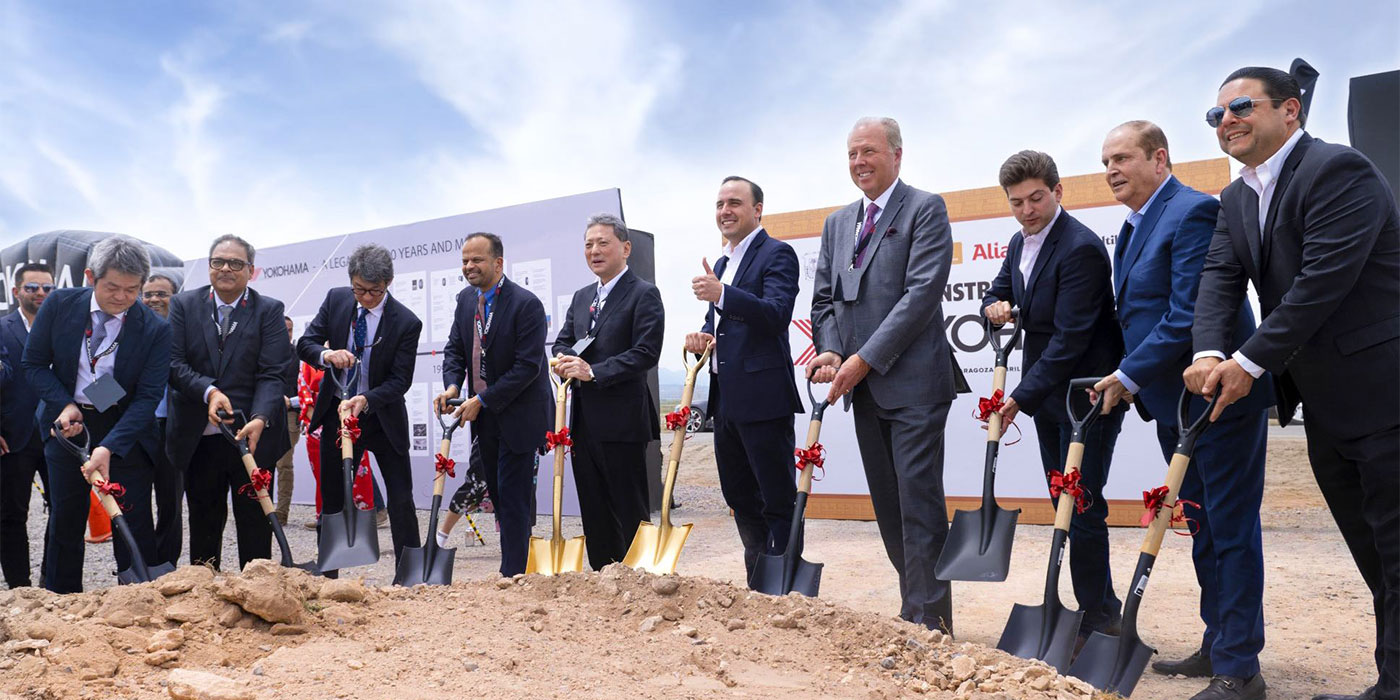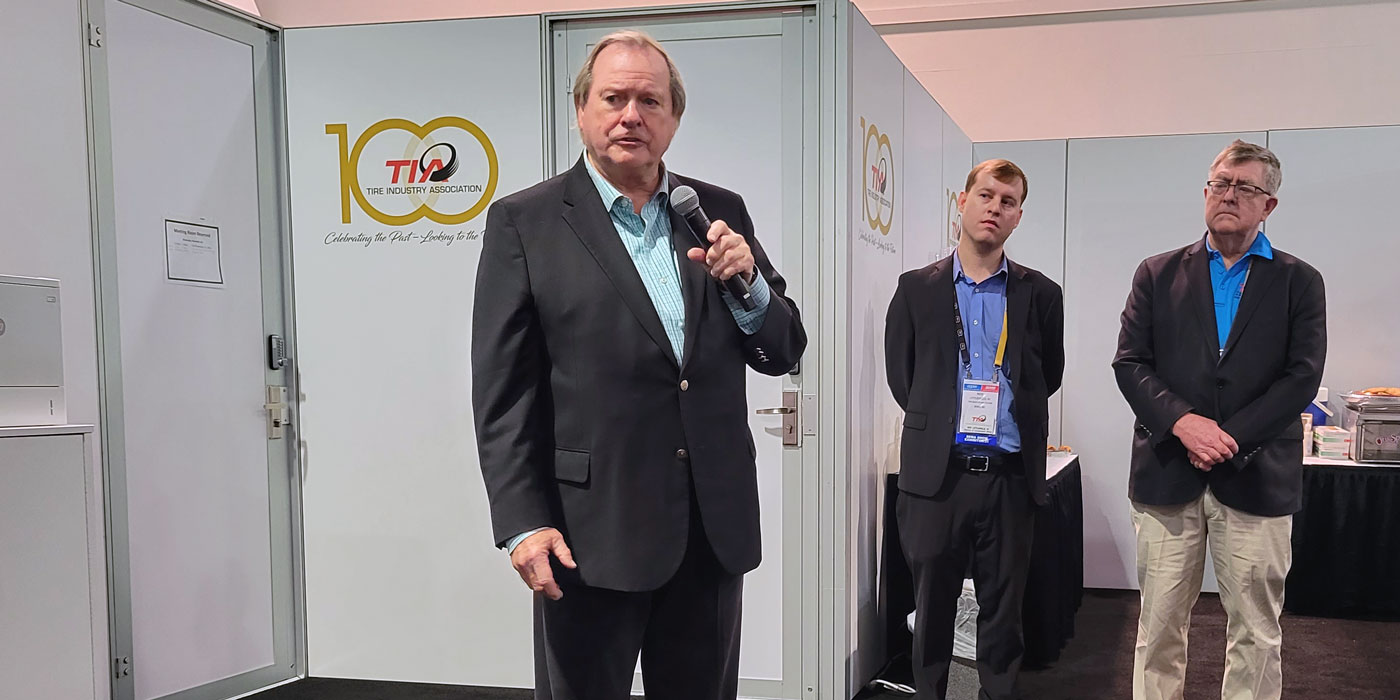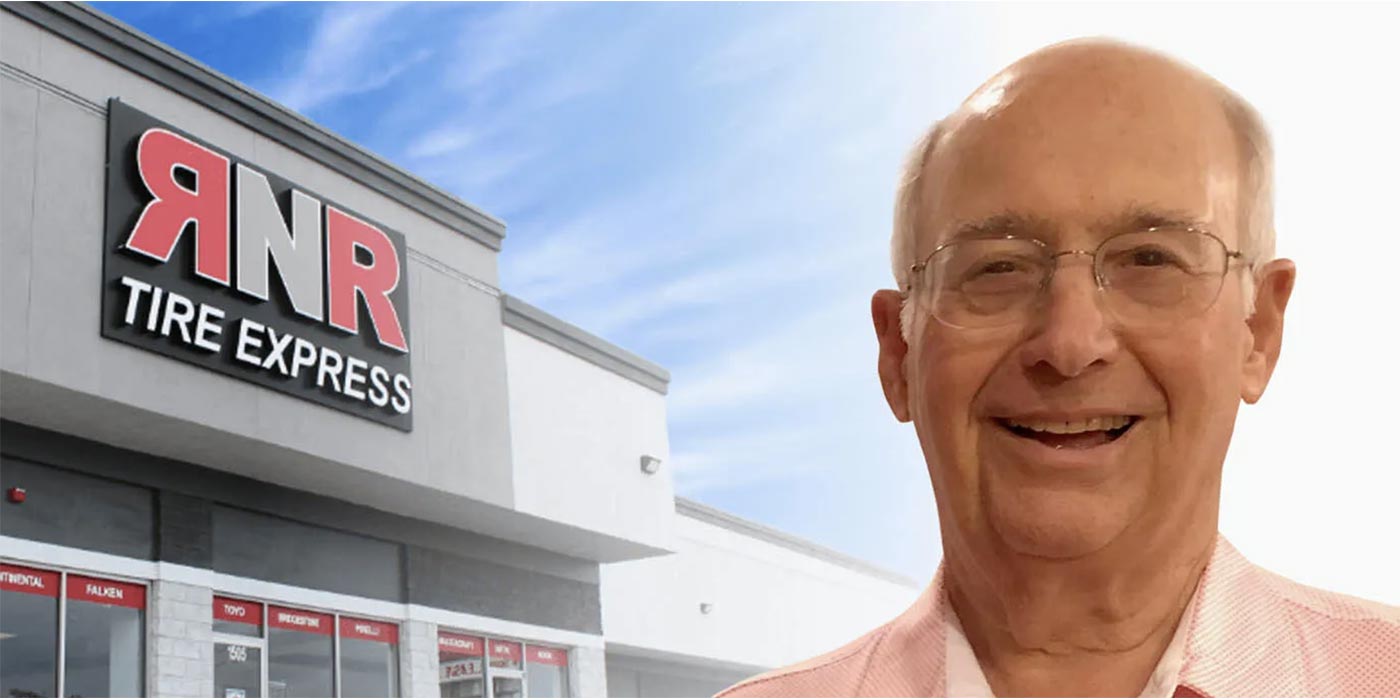
Eight months into his retirement from NASCAR, Dale Earnhardt Jr. isn’t slowing down.
In fact, his work still reaches full speed: he’s NBC’s NASCAR analyst, is a new dad and works to promote the Goodyear Tire & Rubber Co’s brand to not only NASCAR fans but also the public who knows his legacy in the sport of racing and his family’s connection to the tire brand.
At the Michigan International Motor Speedway last weekend, Earnhardt spoke to media about the role tires play in racing during a Goodyear media event about its racing tire technology. Hear what Earnhardt has to say about the construction of Goodyear racing tires, tradeoffs drivers make to have better performance from their tires and what advice he would give about tires to those involved in amateur racing.
Q: Can you give us an overview of how Goodyear works to produce a different tire for each NASCAR race?
Earnhardt: “They’ll do tire tests throughout the year. Goodyear will take a handful of teams to the racetrack – so they came here many months ago to test this track with this tire. They’ll bring some tires from other racetracks and test them too. They don’t use the same build or same compounds (from track to track). They can’t. The roads, the banking and everything… the tire has to be specific to this track so they come here and try what’s worked and test out new ideas and see where the tire is and make things better. Getting to test for Goodyear is also a perk because you’re working with a company that has a great reputation.
“But you know the tire is the most important thing in the car because it connects you to the racetrack. If you get that wrong, all of us suffer from that so we have to thank Goodyear for their hard work and what they do. It is not fun being Goodyear sometimes (in NASCAR) because as drivers, we’re not known to not be forgiving. We have our own car, so it’s very high-pressure situation.”
Q: This track (Michigan International Motor Speedway) was just repaved. Can you talk about what track factors change the tire and the different tire components that drivers can expect each race weekend?
Earnhardt: “Everywhere in the country, they use different type of asphalt and that’s the same thing for this racetrack. No racetrack is the same. In Georgia and South Carolina, they use sand aggregate and crush seashells into the racetrack. In some parts of the country, they use crushed granite. So, in every part of the country, every track has a different material depending on the geographic area you’re in and so that wears the tire differently. You can imagine what it’s like rising on crushed seashells, so when you put tires on that, they have to really be tough…. We try to match the ability of the tire with how much fuel or how well we can go on a fuel run. So, if you can do 60 laps in Atlanta (on a tank of fuel), you want a tire that makes those 60 laps. You want a tire that goes at least a fuel run….you don’t want to go down pit road before you have to. So, that’s why they have to make sure the tire is going to last and make sure tire wear is not too severe.
“Some tracks are really challenging. Drivers, though, want the softest tires you can have… a tire that will run 60,000 miles. They can do the same thing in racing. That would be a really hard tire, but they can make a tire that they could take to every single racetrack. One tire that would go everywhere. But, that wouldn’t be a very good race because if the tire’s not wearing, basically, the drivers will just sit there and run the same lap over and over. Speed-wise, they wouldn’t follow when the tire tells you to slow down and that wouldn’t be a very exciting race. So, the driver likes the tire to be as soft as possible so it wears as much as it can. And as that tire wears, you lose grip and the car slows down and you have some rubber fall off the tire. It goes slower and slower, and it eventually wears out. Goodyear is up against the driver wanting the tire to be extremely soft where it will wear almost to the point of failing, but then they can’t have a tire that fails because they have an image. Right? They can’t have tire failures. You’re going to say what’s wrong with Goodyear tires? They’re failing. The tire has to be awesome but it also has to please the driver. So it’s a bit of a tug-o-war between Goodyear trying to make a tire that raises their profile for people watching the race but that also one that gives drivers what they want.”
Q: What are the competitive tradeoffs that drivers and teams make to gain that advantage?
Earnhardt: “Yeah, so one is air pressure. Guys are going to run as low of air pressure as they can possibly run in the left front tire (the left side tire is smaller than the right side)… Now you can’t run low air pressure in the right side tire … the car has so much force that when the car goes in the corner and you’re banking that fast, it puts so much force in the (right side) tire that it has to have air so that it doesn’t come off the wheel. But the left front tire doesn’t see that type of load. And they want to run that as low as possible.
“That low air pressure flexes that joint where the tread and the sidewall ware out together and there’s heat and friction, and it eventually fails and breaks. We’ll see guys fail left front tires at the Fontana straight away with them running low air pressure so that tire flexes and builds heat. For drivers, 15 pounds is recommended, but they’ll run 14.5, 14.2… they keep climbing down until one guy has a failure, and the team is scrambling around asking hey what were you running? Because I’m not going to run that. We also have guys who will run their tires on low air pressure, and those bumps on that straightaway, they run such low air pressure in left rear tire that when it goes over those bumps, the wheel hits the tread on the ground and splits the tread on the track. Now that’s crazy! But there’s so much grip to be able to wear the tire that low.
“As the car runs laps, the air pressure of the tire gets higher and higher. As the air pressure goes up, the grip goes down, so they want to start as low as possible to try to keep that number low. So once it has 50 laps on it, it has 10 or 20 more pounds of air in it. They have to start it at as low as they can. Typically in the right side tire, the minimum at most places will be like 50 pounds.”
Q: I think avid NASCAR fans understand those tradeoffs but how do you think we can get that out message to other fans and consumers about those tradeoffs? How does it compare to what people have on their personal vehicles
Earnhardt: “I think with your own personal vehicle, just being smart and running the recommended air pressure and getting your tires rotated and getting them balanced and doing all those things is all you really need to worry about.
“The nuances and the things that we’re trying on the racetrack are fun to talk about, and you know, you’re not going to have to worry about that on your street car. You’re not going to have to lower air pressure to get grip… I think that with race car technology, what we’re learning is always changing and Goodyear is always changing the tire. We’ll run this tire the way it is today, and they’ll come back and test next year, and they’ll likely change something in the sidewall or compound or construction.”
You mentioned testing for NASCAR drivers but what from that testing trickles down to passenger tires. Can you give a few examples from testing on a track that would send up on a car on the street?
Earnhardt: “I think mostly it would be heat-related stuff. We put our tires through heat and force. Our tires see two tons of force… if the car goes in the corner and into the banking, the car is forcing the tire to literally take all of that weight. The car has the springs and shocks on it, and all that is being a force to move the tire. So we learn a lot about the sidewall of the tire and its ability to handle those forces. And it’s ability to be durable lap after lap after lap.
“When they have a failure, as soon as that tire gets off on pit road, Goodyear techs are there and they’re inspecting that tire. They want to know why it failed because the crew chief wants an answer, and they need to go back and tell their bosses what happened. Is it something they can do to prevent that situation? Typically, when there’s failure, there’s an adjustment in the setup of a car or too low of an air pressure. I talk about that. So they want to know why that happened and what Goodyear can do to help correct that issue so there’s a lot of things they learn in the failures, and that’s also key to make it to that final consumer role. Typically, it’s all safety issues and stuff like that in terms of what they take away from here.”
What are some tips you can pass along to amateur teams – including tire techs that are part of race teams and amateur drivers – to make their teams and tire programs better?
Earnhardt: “I think the best thing your tire guy can do is to just network with other tire guys of the successful teams. There are some guys that will share information and are willing to give you a step in the right direction because they’ll be some weekends where they’ll be some advantages and maybe some secrets in the tires that a lot of teams aren’t aware of. There’s some speed hidden in air pressure and certain settings for the tires so if you can network and have a great relationship with guys to where you can all communicate with each other what types of things you’re doing with the tires, that can really help a young tire guy. The driver and the team will gain a lot of confidence in him from that information and that consistency.
“If you’re on an underfunded team or an amateur team and you’re trying to look for an advantage, there’s so much in the tires that can be found in speed and handling that come from the car. And some of those guys on the bigger teams are more established tire guys and aware of that information. And if you can make a network and build those relationships with those guys you can get some of that information, it can really help you find speed on the track.”
What do you see as the future of tire technology for the sport and in general?
Earnhardt: “You would always be curious to where the tire is going to be 20 years from now. You know… is it going to be lower profile tire? A more narrow tire? What kind of compounds will we have years from now that will produce better racing? What can they do in the construction of the tire that will produce better racing? We’re always trying to make sure we have an amazing product on the track. And a tire is such a key component in that. It’s such a factor in what the drivers are able to do. And you know Goodyear is in a difficult position because they have to work hard to just be able to maintain and stay competitive with the changing tracks. They have their hands full.
“In terms of a racing tire that we’ll have 10-20 years down the road….I don’t know if it will change at all. It would be interesting to try a tire that’s a little more narrow. As the cars get more and more engineered, they go faster and faster. If you look at from 70s, 80s, 90s, all the way up to now, they just go faster and faster so we’re putting Goodyear in a tough situation to build a tire that can handle the force and the speeds while they maintain safety and consistency.”

